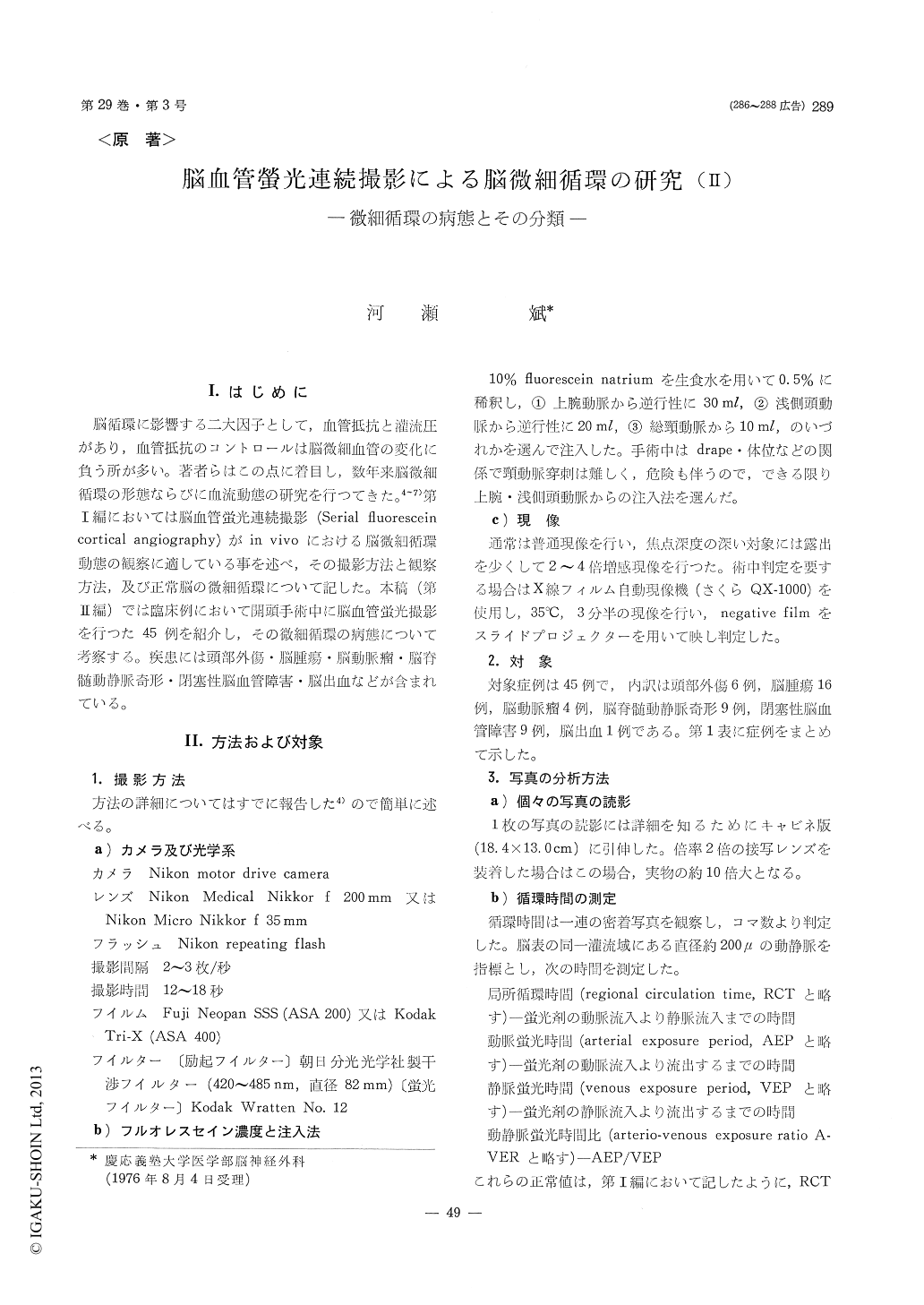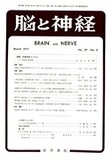Japanese
English
- 有料閲覧
- Abstract 文献概要
- 1ページ目 Look Inside
I.はじめに
脳循環に影響する二大因子として,血管抵抗と灌流圧があり,血管抵抗のコントロールは脳微細血管の変化に負う所が多い。著者らはこの点に着目し,数年来脳微細循環の形態ならびに血流動態の研究を行つてきた。4〜7)第I編においては脳血管蛍光連続撮影(Serial fluoresceincortical angiography)がin vivoにおける脳微細循環動態の観察に適している事を述べ,その撮影方法と観察方法,及び正常脳の微細循環について記した。本稿(第五編)では臨床例において開頭手術中に脳血管蛍光撮影を行った45例を紹介し,その微細循環の病態について考察する。疾患には頭部外傷・脳腫瘍・脳動脈瘤・脳脊髄動静脈奇形・閉塞性脳血管障害・脳出血などが含まれている。
Serial fluorescein cortical angiography was per-formed during surgery in 45 clinical cases such a:head injury, brain tumors, arterio-venous malfor-mation of the brain and spinal cord, cerebralaneurysms, ischemic cerebrovascular disorders andidiopathic intracerebral hematomas.
Local circulation time (regional circulation time,arterial exposure period, venous exposure periodand arterio-venous exposure ratio) was measuredwith vessels 200μ in diameter.
The photographic findings of fluorescein angio-graphy in pathological conditions were as follows. 1) In the cases of epidural hematoma, micro-circulatory insufficiency was still remained afterremoval of the hematoma.
2) In the cases of brain tumors, both irregularityof circulation time on the tumor surface and theexistence of ischemic area surrounding the tumorwere observed.
3) In the cases of arterio-venous malformations,feeding arteries and draining veins were clearlydemonstrated. Furthermore, ischemic zone was seenin the neighbouhood of angiomas.
4) In the cases of acute intracranial hypertention,coexistence of hyperemia and ischemia were ob-served after surgical decompression.
5) In the cases of obstructive cerebrovasculardiseases, hyperemia as well as ischemic area wereshown. The respective local circulation times weredifferent. Hyperpermeability of the vessels wereobserved in border zone between ischemia andhyperemia. After reconstructive surgery, remarka-ble shortening of local circulation time was observedin all cases (luxury perfusion). The results ofobservation of regional circulation time and arterio-venous exposure ratio were characteristic in thefollowing four groups : ischemic group, hypermicgroup, group of capillary block and congestivegroup. In ischemic group, arteriovenous exposureratio showed normal value, whereas regional circu-lation time was prolonged. In hyperemic group,AVERs were less than the normal range. Further-more, the shortening of RCTs due to microvascularenlargement were obserbed. In capillary blockgroup, AVERs were above normal range and pro-longed RCTs due to arterial microcirculatory stag-nation were observed. In congestive group, AVERshowed the value less than normal. Consequentlythese pathologic circulatory dynamics were clarifiedby the estimation of RCT and AVER.

Copyright © 1977, Igaku-Shoin Ltd. All rights reserved.


